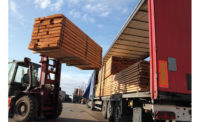The highly technical nature of the facilities means there are only about “six or seven” engineering firms in the world with the expertise to design and build them. “The people who were building these plants 25 to 30 years ago … they’re all gone. So part of building one of these plants is to go out and find the talent that can do it,” Hart says. “The number of firms that can build these plants and provide the guarantees owners need to get financing is very limited,” Hart says.
Fertilizer production is so tied to the engineering sector that some projects have looked to contractors to provide much more than design and construction services. In November, China’s Cheng Da Engineering signed a memorandum of understanding with Northern Plains Nitrogen to design, engineer and finance a proposed $1.7-billion plant just outside of Grand Forks. Orascom Construction Industries, Egypt, is EPC provider, bond issuer and major investor in a $ 1.5-billion plant in Wever, Iowa.
Braking for Safety
A CF Industries plant explosion near Waco, Texas, last April killed 14 people, and recent high-profile oil and chemical transport accidents in Ontario, Alabama and elsewhere have made communities more cautious about approving and permitting these projects, Hart says.
In Kern County, Calif., residents recently protested the Hydrogen Energy California project proposed to make fertilizer out of coal and petroleum coke. At a public meeting, David Couch of the county’s board of supervisors, which administers emergency response and hazard mitigation, said more measures to deal with a hazardous emergency need to be included in the plans before the plant was approved. Safety concerns have also held up a building permit for CHS Inc.’s proposed plant near Spiritwood, N.D. The township’s supervisors want more access roads built near the plant in the event of an emergency and asked the company to revise its proposal, according to local reports.
Fertilizer companies depend heavily on engineers to allay project opponents’ fears about hazardous materials’ transport and storage. For instance, Hart says, designers and engineers can gear the production process toward making granular urea, which is more easily transported and poses fewer dangers than anhydrous ammonia.
“Ammonium nitrate was the source of the explosion near Waco, and plants that plan to produce this need added safety design. This means apart from any of the process design, storage facilities have to be carefully engineered as well,” Hart says.



Post a comment to this article
Report Abusive Comment